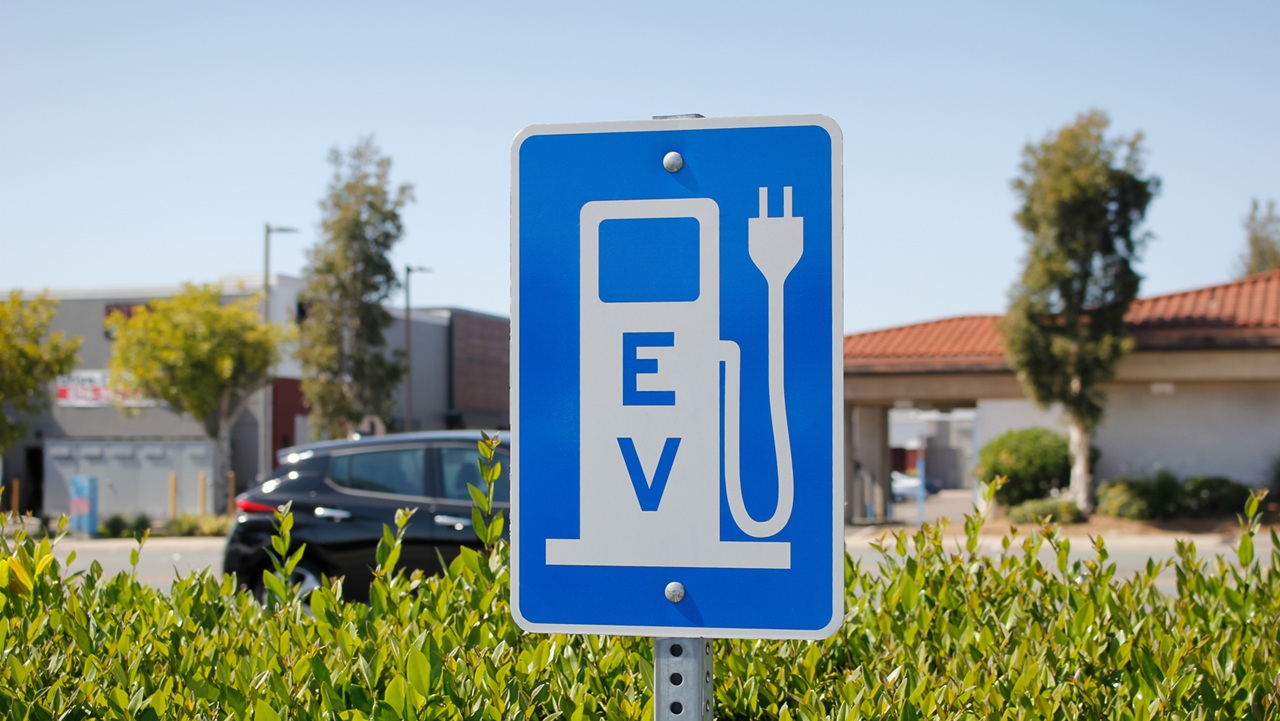
EV charging is new territory for many cities and counties, who are learning along with utilities, local property owners, and local businesses who can help build out a city or regional charging network. As new EVs become more affordable and the used EV market grows, cities and counties will play a central role in making buying an EV a viable option for their residents. To do so, cities and counties will need to work across sectors to develop a reliable publicly available charging network that conveniently serves all residents.
Eight early adopter cities—Ann Arbor, Austin, Boston, Denver, Los Angeles, New York, Oslo, and Portland, Oregon—share their experiences in “Lessons from Leading EV Charging Cities,” a report offering guidance for communities that are beginning to formulate their EV programs, as well as advice for those operationalizing their programs. These lessons were distilled from an in-person workshop with the eight cities organized by Harvard University’s Salata Institute for Climate and Sustainability and Taubman Center for State and Local Government, as well as MIT’s Center for Energy and Environmental Policy Research.
The eight early adopter cities identified four key program considerations: planning, policy, partner coordination, and funding and investments. While each community is unique, adapting these focus areas to fit your circumstances will help launch and scale a charging program. Every section ends with a set of questions to help guide your team’s thinking in regard to your own community. I am pleased to share some key wins and lessons learned from each program category in the report.
Planning: Set Goals, but Don’t Wait to Have an Approved Plan
Key Win
Clear, transparent, and measurable goals help residents, businesses, charging companies, utilities, and other stakeholders understand the scope and objectives of your program and identify how to support your efforts where possible. Early adopter cities strongly suggested setting operational goals and milestones that are both city and resident focused, whether your city/county begins with a formal EV plan or not. For example, your town might target having a publicly available charger within a 10-minute walk of every resident’s home, as well as an overarching number of chargers, such as installing 500 chargers within two years.
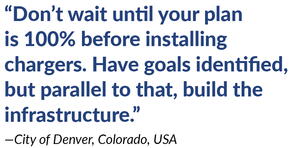
Lesson Learned
Make your EV program evidence-based by prioritizing data collection—both the system to store the data and the staff to manage and analyze the data. Early adopter cities indicated they wished they had spent more time setting up infrastructure to capture detailed data including EV station usage, individual charging sessions, and uptime. This is particularly important for cities/counties that partially or fully contract out charging services. In your procurement process, be explicit in outlining what data will be sent to the city/county, how, in what format, and with what frequency. Define penalties for noncompliance or incomplete data. Some leading cities also added an option to their existing 311 systems or a form on their public websites to enable residents to easily report charger outages.
Policy: Evaluate Policies that Can Help Accelerate Charging Installation
Key Win
In one-third of early adopter cities, most publicly available chargers are on private property like malls and apartment buildings. Cities/counties can aid these private efforts by removing zoning and code impediments, as well as allocating staff to promptly review permits, assess grid capacity, and otherwise support private charging installation. Your city/county can also lower hurdles by producing a guide to installing EV charging for businesses and residents. Every participating city made policy changes to support their charging efforts. Most commonly these changes dealt with code, zoning, and permitting rules.
Lesson Learned
Work with current and new private partners to understand if waivers or code revisions have encouraged installation and continue to identify ways that the city/county can ease installation costs and concerns. Hosting an annual meeting that brings both public and private partners together to celebrate and fine tune the program can help city planners and policy revisions. Though cities/counties can install in many places, chargers on private property play an important part in your city or regional network.
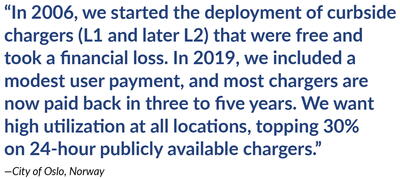
Partnerships: Connect Early with Your Local Utility
Key Win
Collaboration between the city and utility on EVs is essential. Understanding electricity needs for the transportation sector is a new area for both parties. Both can work together to co-develop locations and coordinate on a longer-term roadmap that integrates planned power upgrades with potential charging locations that may need additional power capacity (e.g., the utility may be planning to upgrade, bury, or replace power lines in preferred charging locations). This can help avoid conflicts between city and utility efforts (e.g., the city creating a bike lane on a street with a utility-installed EV charger).
Lesson Learned
Many leading cities said they should have done more community engagement at the beginning of their programs. Partnering with valued neighborhood champions and organizations can help spread the word about the new charging program to reach more residents. Residents can also participate and offer feedback in the location selection process, keeping them invested in the program’s progress.
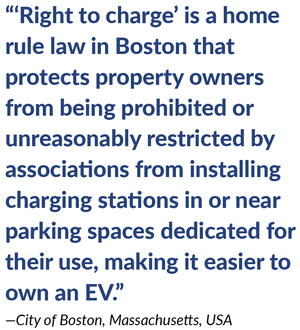
Funding and Investments: The City Does Not Have to Fund It All
Key Win
Early adopter cities considered multiple program models for cost recovery, such as contracting out the entire program due to lack of internal expertise, funding through special bonds or specific fees, or a mix of several models. If your program is functional, you should have actual charger costs versus initial estimates to gauge how well the program is operating. If your city/county is not sure about committing to a new program, consider advocating for a pilot to see how residents respond to build support for a permanent EV charger program. If your utility is leading the effort, it has access to different funding streams.
Lesson Learned
The program launch likely focused on getting chargers online with maintenance receiving less attention. However, chargers will only encourage residents to purchase or transition to EVs if those chargers are reliably working—which means being prepared to identify and repair broken chargers quickly. Ensure operations and maintenance funding is available—whether the program is operated by the city/county or contracted out—to build resident confidence that chargers will be available when they need them.
Final Thoughts
A consistent theme among these early adopter cities was that the availability of EV charging is critical to enabling EV adoption. Public charging makes owning an EV possible for your residents who cannot charge at home, including those who live in multi-family buildings, park on the street, and/or rent their home.
Every city/county has many tools to facilitate investment in charging, from directly investing in chargers, to facilitating private investment, to using building codes to encourage investment at multi-family residences and workplaces. To learn more about how these cities approached and adapted their EV charging programs, access the full report here.
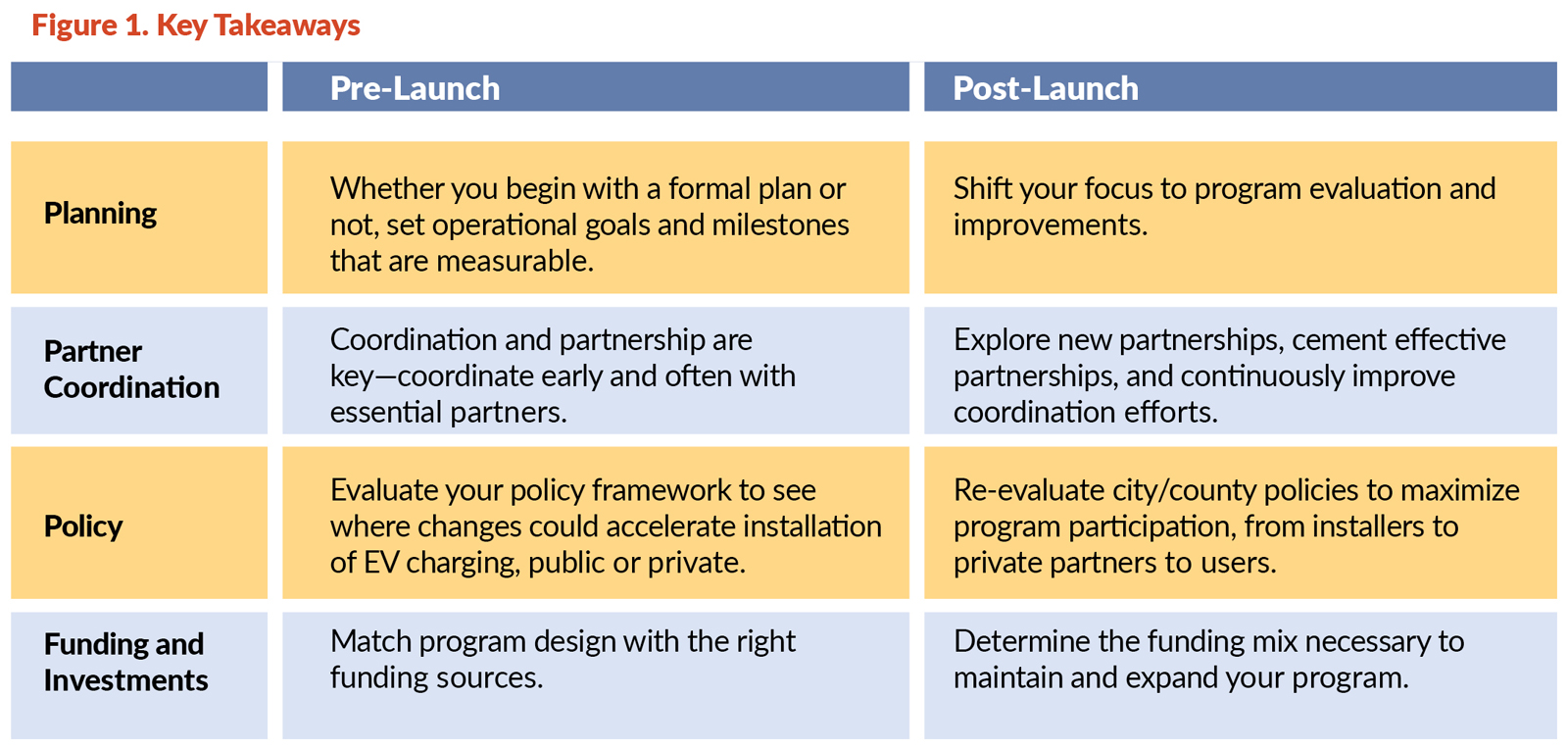
LAILA ALE is an affiliated researcher with the Salata Institute for Climate and Sustainability. She is a co-author of the “Lessons for Leading EV Charging Cities” report, along with Elaine Buckberg, senior fellow at the Salata Institute; and Kathryn Carlson, executive director for the Rappaport Institute at the Taubman Center for State and Local Government. If your city needs research and data support for charging programs, please reach out to the Salata Institute here.
New, Reduced Membership Dues
A new, reduced dues rate is available for CAOs/ACAOs, along with additional discounts for those in smaller communities, has been implemented. Learn more and be sure to join or renew today!
